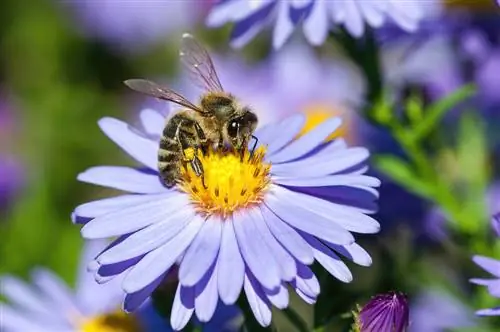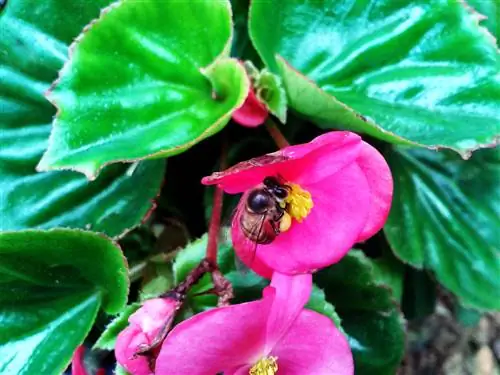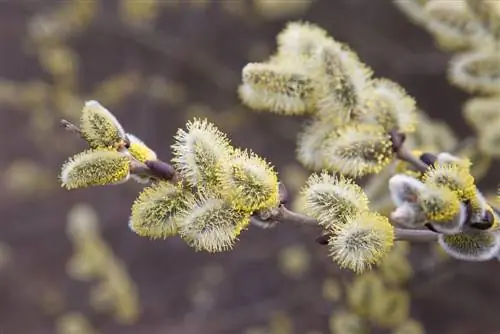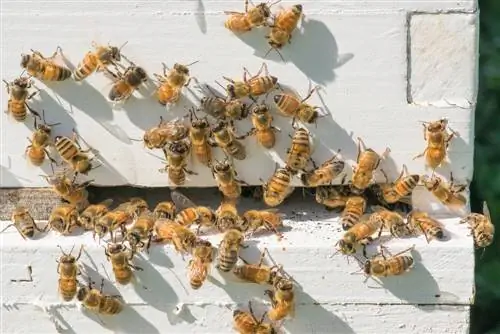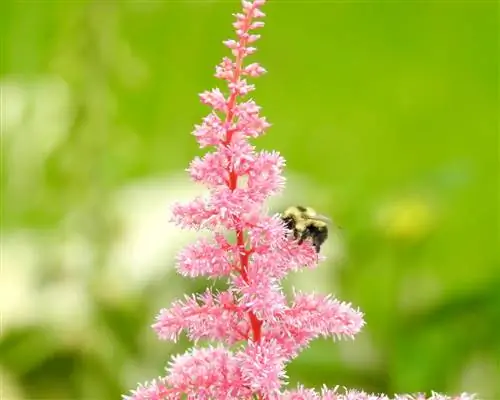- Author admin [email protected].
- Public 2023-12-16 16:46.
- Last modified 2025-01-23 11:22.
The late-blooming autumn aster, to put it bluntly, is a bee-friendly plant. However, this does not apply to all types of asters. You can find out what you need to pay attention to when buying here.

Which asters are bee-friendly?
Asters are bee-friendly, especially in their unfilled form, as they contain nectar and pollen. Late-flowering species such as rough-leaf aster (Symphyotrichum novae-angliae) and mountain aster (Aster amellus) are particularly recommended as an important food source for bees in autumn.
Which asters do bees fly to?
Asters - regardless of type and variety - are often flown to by bees, because the insects are magically attracted to the bright flowers with a yellow center. However, caution is advised with double cultivars. Although they attract bees with their bright colors, they have no useful value for the busy bees because they hardly contain any pollen or nectar. That's why double asters are, strictly speaking, unfriendly to bees, because they rob the insects of strength and energy in their vain search for food.
What value do unfilled asters have for bees?
Unfilled asters have ahigh value for bees. On the one hand, the perennials are very nutrient-rich, and on the other hand, the late-flowering varieties in particular are an important source of food in autumn, especially for the highly endangered wild bees.
Which asters are specifically suitable as a bee pasture?
When specifically selecting asters for the bee-friendly garden, you should be guided by the so-calledquality value This is made up of nectar and pollen value. Aster species with high values are, for example, the two hardy species “Raublatt-Aster” (Symphyotrichum novae-angliae) and “Mountain Aster” (Aster amellus), whose flowering period lasts from August to October - even longer in mild regions.
Tip
Asters are just part of the bee-friendly garden
Although late-blooming asters are an important food source for bees, they should not be the only source of food for the insects in the garden. In a bee-friendly garden, it is important that the insects find food from spring to autumn. Therefore, in addition to the autumn asters, you should also plant summer asters.

